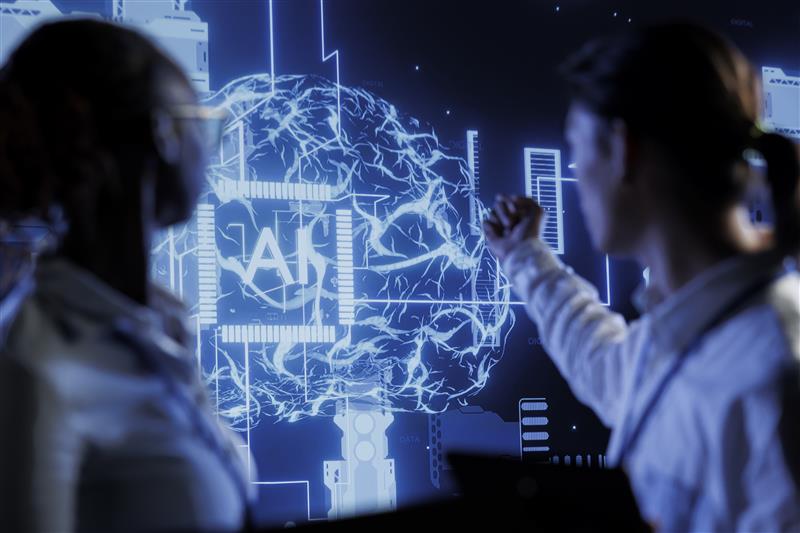How to Make an AI System? A Complete Guide
AI systems are transforming how agencies and people work. They can automate responsibilities, examine data, and enhance decision-making, making processes quicker and more efficient. AI is shaping the future, from virtual assistants to self-using cars. Suppose you are wondering how to make an AI. In that case, it includes schooling devices to learn fashions, processing widespread quantities of information, and fine-tuning algorithms to perform particular tasks effectively. AllCode focuses on AI improvement, imparting professional solutions to assist agencies in harnessing the electricity of artificial intelligence.

Why is AI Systems Worth Investing In?
Efficiency Gains
Better Customer Service
Innovation and Growth
Cost Efficiency
Programming Languages for Building an AI System
Python
R
Java
Julia
What Is Needed to Build an AI System?
1. Define a Clear Goal
Before beginning, it’s vital to recognize what the AI system will do. AI is built to solve problems, so defining the problem in reality allows for a great answer.
- What problem does the AI system need to solve?
- How will the AI system help users?
- Does this problem match AI’s abilities, like machine learning or language processing?
2. Collect and Prepare Data
Types of Data:
- Structured Data: Well-organized, like spreadsheets or databases.
- Unstructured Data: Includes images, videos, or text that need extra processing.
Steps to Prepare Data:
- Data Collection: Get data from different sources that match your AI project.
- Data Cleaning: Remove duplicate or incorrect data and organize the format.
- Validation: Work with experts to ensure the data is correct and unbiased.
Choose and Build the Right Algorithm
The algorithm is the “brain” of the AI device. It facilitates AI’s examination of statistics and provides beneficial outcomes.
3. Common AI Algorithms:
Neural Networks: Best for deep learning responsibilities like image reputation.
K-Nearest Neighbors (KNN): Used to group similar facts.
Random Forests: Helps AI make selections using huge quantities of statistics.
Many AI developers use existing AI tools and frameworks instead of building from scratch. Some companies also offer generative AI development services to help speed up the process.
4. Train the AI Model
Steps in Training:
- Split Data: Use 80% of information for schooling and 20% for testing.
- Identify Patterns: The AI finds patterns and learns how to make choices.
- Improve Accuracy: AI is tested and refined multiple times.
Challenges in Training:
- Poor Data Quality: Missing or incorrect data affects performance.
- High Computing Power: Some AI models need strong processors.
- Overfitting: AI has to study general styles, not just memorize data.
A properly educated AI version can remedy real-world problems and provide valuable insights.
5. Deploy the AI System
Once trained, the AI system is ready to be used. Deployment means integrating AI into a real-world system.
Some AI software developers use cloud services to handle AI deployment. An AWS cloud consulting company can help set up AI models on cloud platforms.
When deploying AI, it is important to:
- Make the system user-friendly.
- Ensure security and data protection.
- Keep the AI system aligned with business goals.
6. Monitor and Improve the AI System
Key Areas to Monitor:
- Performance: Check if AI is making correct predictions.
- New Data: AI should adapt to new information.
- User Feedback: Make improvements based on real-world use.
Building an AI system is not a one-time process. Continuous monitoring ensures it stays useful and effective.
Challenges in AI Software Development
AI is transforming software development, but it also comes with challenges. Here are some common issues developers face when building AI products.
Understanding Code
Data Compliance Issues
Ethical and Legal Concerns
Ethical and legal issues arise if AI is utilized in banking, healthcare, or any discipline handling personal information. Developers must ensure that AI systems appreciate privacy, avoid bias, and remain obvious and accountable.
AI Mistakes
Finding Skilled AI Professionals
We provide Generative AI improvement services for fintech, healthcare, and other industries. Our team comprises Backend, Frontend, QA, Design, and Product Managers to help construct AI answers.
Hire AI Developers to Create AI for Your Business
Looking to build AI for your business? Hiring experts can save time and ensure quality. AllCode specializes in generative AI application development to create smart, efficient solutions. As an AWS consulting company, we help businesses integrate AI with cloud services for better performance. Work with skilled developers to bring AI innovation to your industry.
Wrap up:
AI is shaping the future, offering automation, efficiency, and innovation for organizations of all sizes. From improving customer support to streamlining operations, AI unlocks new possibilities. If you are wondering how artificial intelligence is made, it includes growing gadget learning models, training them with facts, and optimizing algorithms to carry out smart tasks.
